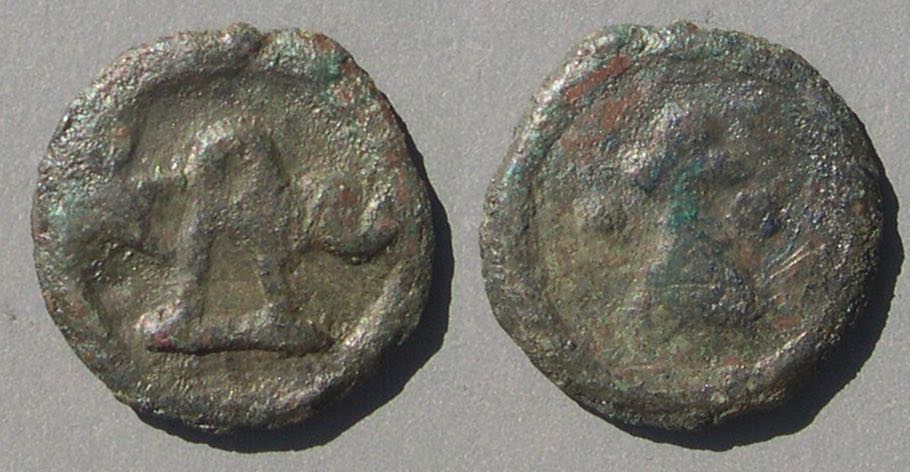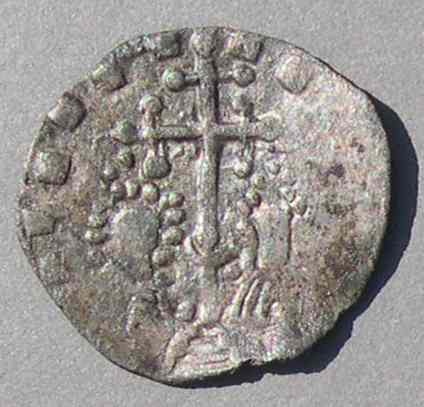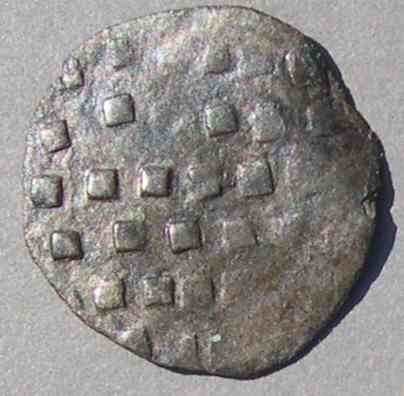17


So10.6-7
LD
21a, 21b.1-2
DO 21.b retrograde rev.
22


So7.10-11
Basil I
19.1 pl. XXXIII
So. Basil II
Basil II (976-1025) and Constantine VIII (976-1028)
Images. [17 or 22 mm]
| E37 17 |
 |
 |
A441-444 So10.6-7 |
S1814 LD |
B947 | G890 | DO III,II, pl. XLVII 21a, 21b.1-2 |
A443: retrograde obverse DO 21.b retrograde rev. |
| E38 22 |
 |
 |
A445-448 So7.10-11 |
S1717 Basil I |
B910 | G869 | DO III,II Basil I 19.1 pl. XXXIII |
large, AE23 So. Basil II |
Sear does not attribute any coins to Cherson after Basil II, S1814.

Type E37
18 mm. 12:00. 2.86 grams.
Anokhin 441-2
Sear 1814 (this one not retrograde)


Type E38
Basil II
21mm. 12:00. 6.74 grams.
Anokhin 445-448
Sear 1717, attributed to Basil I

Type E38
Basil II
22mm. 12:00. 5.82 grams.
Anokhin 445-448
Sear 1717, attributed to Basil I
The next coin was not minted at Cherson, but to the east on the Taman peninusla, across the straits to the Sea of Azov from Kerch/Pantikipaion. This is one of the first Russian coins.


Tmutarakan Princedom on the Taman peninsula in Russia (just east of Ukraine), one of only three "Rus" regions (Kiev, Novgorod, and these guys) to issue coins before the Mongols took over. Very rare.
Base AR20-19. 1.22 grams. 10:30. Thin. Typical weight for these.
Imitation miliaresion with prototype one of Basil II and Constantine VIII (976-1025). Probably minted under Price Mstislav Vladimirovic until 1024. The reverse letters of the prototype have been reproduced as square dots.
There are few references to these. One is "Golonko 8" from "Die Tamaner Gruppe der Nachahmungen Byzantinische Miliarensia" in Dona Numismatica, 1965.
Continue with the images from the next page, Romanus III (1028-1034).
Return to the images from the previous page, Romanus II (959-963), Nicephorus II (963-969), and John (969-976).
Return to the main page on coins of Byzantine Cherson.